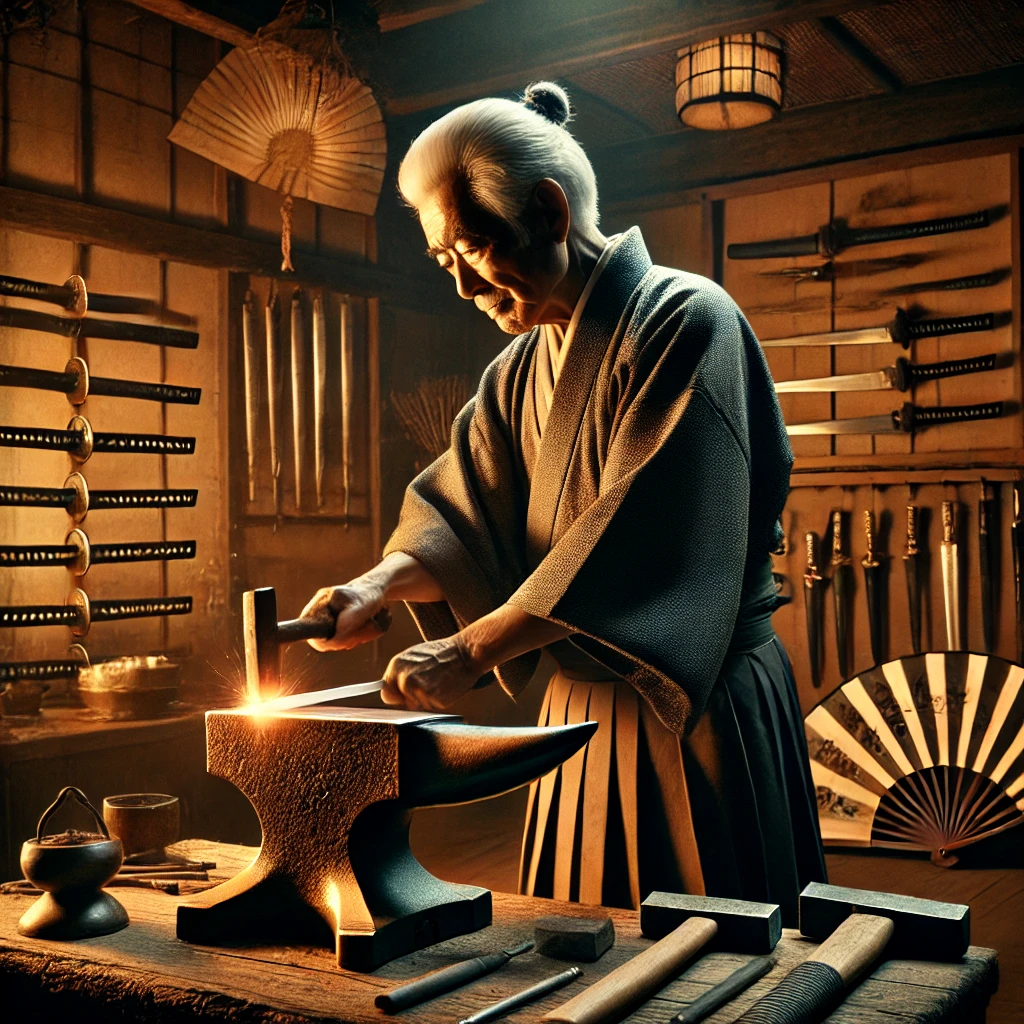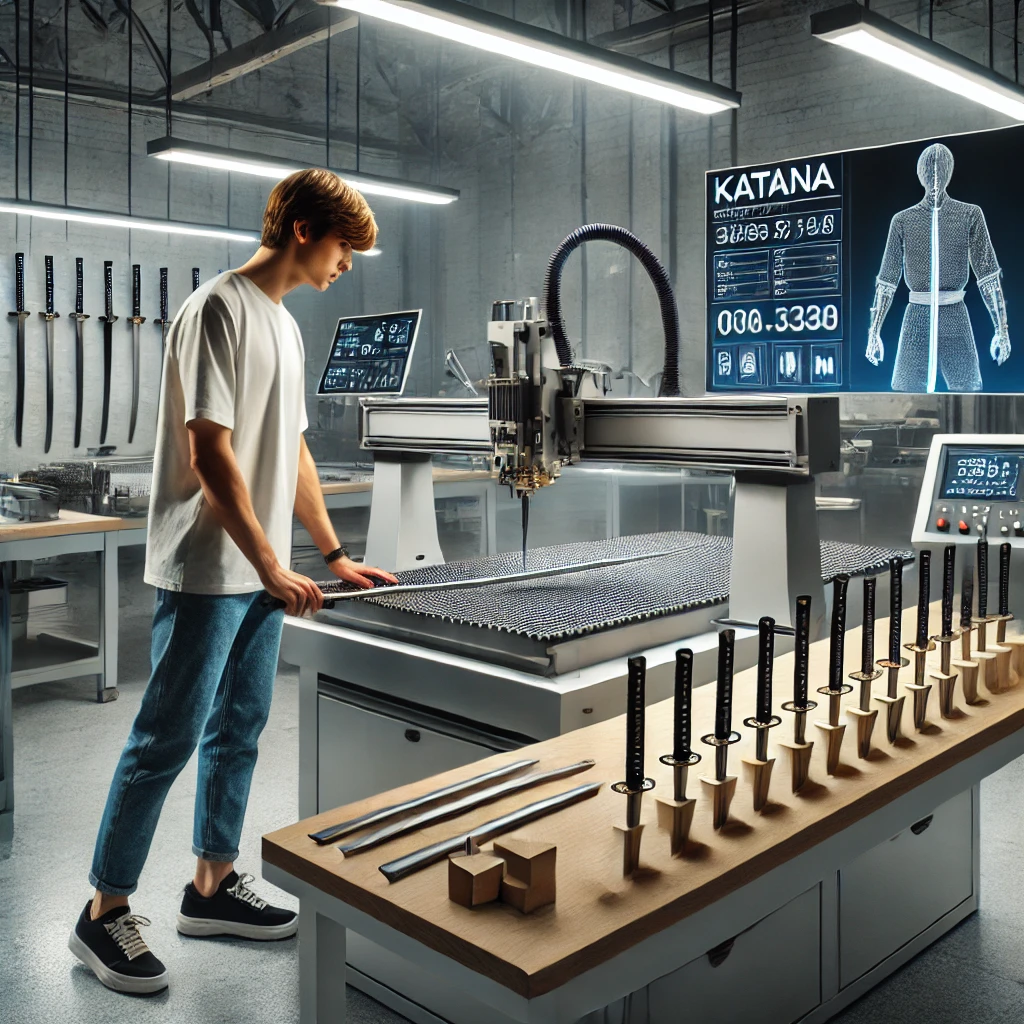The art of katana making has evolved over centuries. Traditional techniques passed down through generations remain essential. Yet, modern craftsmanship now embraces technological innovations. This blend creates stronger and more refined blades, meeting the demands of both collectors and martial artists.
I. Traditional Katana Making
Katana crafting has deep roots in Japanese history. Master swordsmiths would spend months forging a single blade. The process involved heating, folding, and hammering the steel repeatedly. This ensured the sword’s strength and sharpness. Each step was meticulous and required immense skill. These traditional methods produced katanas with unique patterns and temper lines.

II. Influence of Modern Technology
In recent years, technology has revolutionized katana production. Advanced machinery and tools have streamlined the forging process. This reduces production time while preserving quality. Laser-cutting technology now shapes the blades with precision. This method allows for consistent blade thickness and geometry. As a result, each sword meets exact specifications.
Another innovation involves metal alloys. Traditionally, swordsmiths used tamahagane, a high-carbon steel. Modern techniques use various alloys for enhanced strength and flexibility. Some swordmakers experiment with titanium and other metals. These materials provide lightweight options for different purposes. Consequently, Japan swords for sale today often combine traditional beauty with modern practicality.
III. Enhancing the Craftsmanship
Despite technological advancements, craftsmanship remains at the heart of katana making. Skilled artisans still perform many steps by hand. Polishing a blade, for instance, requires careful attention. This step reveals the sword’s grain and temper line, known as the “hamon.” Even in modern settings, this task can take days to complete.
Swordsmiths also use technology to refine their craftsmanship. Computer simulations help predict how a sword will behave in combat. This data guides adjustments in blade curvature and balance. Such innovations ensure that Japanese swords for sale today meet the highest standards of performance.
IV. Combining Tradition and Innovation
Modern katana makers respect tradition while embracing new methods. Some master swordsmiths integrate ancient techniques with technological advances. They may start by forging the blade using traditional methods. Later, they employ machines for precise shaping and edge refinement. This combination creates swords that honor history yet fit modern needs.
Moreover, technological advancements have expanded design possibilities. Swordmakers can now customize swords with intricate engravings and inlays. Laser engraving allows for detailed designs without damaging the blade. Collectors often seek such unique features in Japan swords for sale.
V. Quality and Authenticity
Technological improvements do not compromise quality. In fact, they enhance it. Modern equipment ensures uniformity in blade composition. This minimizes defects and improves overall performance. High-quality control measures guarantee each sword’s durability and sharpness. Authenticity remains crucial in katana making. Many modern swordsmiths are certified by traditional schools. This certification assures buyers of a sword’s genuine craftsmanship.
VI. Accessibility and Global Market
Technological innovations have also made katanas more accessible. Previously, acquiring a high-quality sword required a trip to Japan. Now, online platforms offer Japanese swords for sale worldwide. Buyers can choose from a vast range of styles and price points. E-commerce has allowed enthusiasts to explore and purchase swords easily.
However, this accessibility has a downside. The market now contains many mass-produced replicas. These lack the quality and spirit of true craftsmanship. Buyers must research thoroughly before purchasing. They should seek swords made by reputable swordsmiths. Certificates of authenticity can also help ensure a genuine product.
VII. Preservation of the Samurai Spirit
Modern innovations do not dilute the samurai spirit embodied in katanas. Instead, they preserve it in new ways. Today’s swordsmiths strive to maintain the katana’s essence. They respect the traditions of their craft while adapting to changing times. Technology helps them continue this legacy. It allows for the creation of swords that are both functional and beautiful.
Collectors and martial artists appreciate this blend of old and new. They seek swords that embody both history and modernity. Japan swords for sale today symbolize this harmonious fusion. They represent not just weapons but also a timeless spirit.

VIII. Conclusion
Modern craftsmanship and technological innovations have transformed katana making. The process now blends traditional methods with advanced technology. This fusion results in stronger, more versatile swords. Yet, the heart of katana making remains unchanged. Skilled artisans continue to craft each blade with dedication and precision.
For enthusiasts, the market offers a wide array of Japanese swords for sale. These swords capture both ancient traditions and contemporary advancements. The future of katana making lies in this balance. By honoring the past while embracing the future, swordsmiths keep the spirit of the katana alive.
When searching for Japan swords for sale, consider both tradition and innovation. Look for swords that carry the mark of true craftsmanship. This ensures not only a beautiful blade but also a piece of living history. Thus, the katana remains more than just a weapon. It is a testament to the enduring spirit of the samurai in modern society.